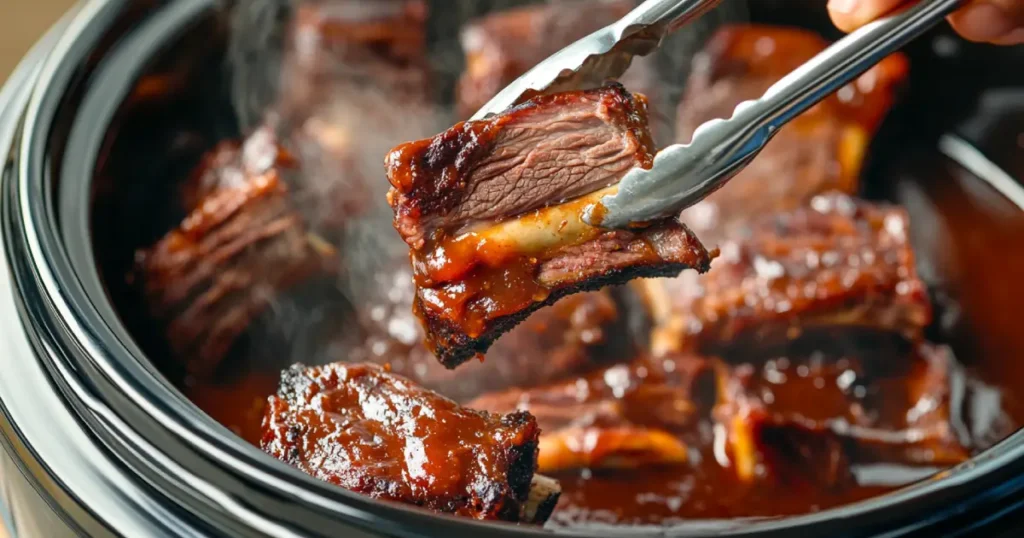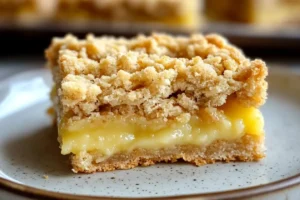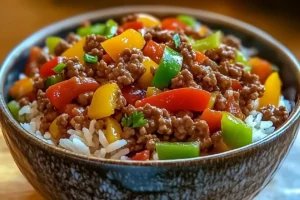Cooking boneless short ribs might seem intimidating, but it’s simpler than you think! If you’re wondering how to cook boneless short ribs, this guide walks you through everything you need to know—from selecting the right cut to mastering cooking techniques for fall-apart tender, flavorful meat. Whether you’re a fan of slow-baked recipes, crave smoky BBQ flavors, or want to experiment with creative side dishes, you’ll find all the answers here. Let’s dive into the delicious world of boneless short ribs!
Outline
Overview of Boneless Short Ribs
What Are Boneless Short Ribs?
Boneless short ribs come from the chuck section of beef, specifically from the area just above the ribs. They’re prized for their rich marbling and deep flavor, making them a favorite for slow-cooking methods. Unlike bone-in short ribs, these cuts deliver pure meaty goodness without the hassle of bones.
Why Choose Boneless Over Bone-In?
While bone-in ribs are known for their enhanced flavor, boneless short ribs offer more meat per bite, making them an excellent choice for hearty meals. Plus, they’re easier to handle and serve, especially when feeding a crowd.
Overview of Cooking Methods
There’s no one-size-fits-all approach to cooking boneless short ribs. Whether you’re using the oven, a slow cooker, or an Instant Pot, each method offers unique advantages:
- Oven-baking yields tender, caramelized ribs.
- Slow cookers are perfect for low-maintenance, all-day cooking.
- Instant Pots provide a quicker option without sacrificing flavor.
Mastering these methods will ensure your ribs turn out juicy and mouthwateringly good every time. Ready to get started? Let’s move on to preparing these irresistible cuts!
Preparing Boneless Short Ribs

Selecting the Best Cut: Flanken vs. English Cut
When learning how to cook boneless short ribs, the cut you choose matters. There are two primary styles: Flanken and English. Flanken cut ribs are sliced thin across the bone, which works well for grilling or quick cooking. However, if you want tender, juicy meat for slow-cooking methods, opt for English cut ribs, which are thicker and have more marbling. This style ensures your ribs stay moist and flavorful during long cooking times.
Look for ribs with consistent marbling, as the fat will melt into the meat, creating rich flavors. While boneless short ribs are often sold pre-trimmed, ensure the meat is fresh and vibrant red.
How to Properly Trim and Marinate the Meat
Before cooking, it’s important to prep your ribs. Trim any excess fat, but leave enough to keep the meat moist during cooking. Then, consider marinating the ribs to infuse flavor and tenderize the meat. A marinade with ingredients like soy sauce, garlic, vinegar, and brown sugar can work wonders.
For best results:
- Combine your marinade ingredients in a resealable bag.
- Add the ribs and ensure they’re well-coated.
- Seal and refrigerate for at least 2 hours, or overnight for deeper flavor.
This step sets the foundation for delicious ribs, no matter the cooking method.
Essential Ingredients for Tender Ribs
To master how to cook boneless short ribs, it’s essential to use the right ingredients. While recipes vary, common staples include:
- Beef short ribs (preferably English cut).
- Seasonings like kosher salt, black pepper, and garlic powder.
- A rich BBQ sauce or a savory marinade.
- Optional flavor enhancers, like liquid smoke or Worcestershire sauce.
Having these basics ready ensures you’re well-prepared for the next step: cooking!
Cooking Methods for Boneless Short Ribs

Oven-Baked Boneless Short Ribs
The oven is a classic method for cooking boneless short ribs. Start by preheating the oven to 300°F. Place the seasoned ribs in a baking dish and cover them with your preferred sauce. Seal the dish tightly with foil to lock in moisture, and bake for about 2 ½ hours. For a caramelized finish, remove the foil and bake uncovered for an additional 30 minutes.
Tips for oven-baking:
- Check the ribs every 20 minutes to ensure they’re not drying out.
- Spoon extra sauce over the ribs midway through cooking.
The result? Tender, fall-apart ribs that are perfect for any dinner table.
Slow Cooker Method: Set It and Forget It
When it comes to convenience, the slow cooker is hard to beat. Season the ribs and sear them in a hot skillet for 2-3 minutes on each side to enhance the flavor. Transfer the ribs to your slow cooker, pour in your sauce, and set it on low heat for 7-8 hours.
Why choose the slow cooker?
- It’s ideal for busy days since you can leave it unattended.
- The low, slow heat breaks down connective tissues, making the ribs incredibly tender.
Instant Pot: Quick and Flavorful Ribs
Pressed for time? The Instant Pot is your best friend when mastering how to cook boneless short ribs. Start by seasoning and searing the ribs in the pot using the sauté function. Add your sauce and set the pot to pressure cook on high for 45 minutes.
Once the cooking cycle ends, allow the pressure to release naturally for 10 minutes before opening the lid. The result is tender, flavorful ribs in a fraction of the time.
Enhancing Flavor with Sauces and Sides
Classic BBQ Sauces and Variations
No matter how you choose to cook boneless short ribs, the sauce can elevate your dish from good to unforgettable. A traditional BBQ sauce, with its sweet, tangy, and smoky flavors, is always a crowd-pleaser. To mix things up, consider trying variations like cherry-chipotle, bourbon-glazed, or even maple-mustard sauces.
For a unique twist, add a splash of liquid smoke or a pinch of cayenne pepper to your sauce for extra depth. These small tweaks can transform the flavor profile, making your dish stand out.
Serving Suggestions: Pairing Ribs with Sides
Short ribs are rich and hearty, so they pair wonderfully with lighter, complementary sides. Consider serving them with:
- Creamy mashed potatoes for a comforting combination.
- Roasted vegetables like carrots and brussels sprouts for a balanced plate.
- A crisp coleslaw or mixed green salad to cut through the richness.
These sides not only enhance the overall meal but also ensure your dinner table is filled with color and texture.
How to Use Leftover Short Ribs Creatively
Got leftovers? Turn them into something new! Shred the meat and use it as a topping for baked potatoes, tacos, or even nachos. Alternatively, mix the shredded ribs with extra sauce to create a delicious filling for sliders or sandwiches.
For more inspiration, check out this boneless beef ribs recipe for another tasty take on this hearty dish.
Common Mistakes and Troubleshooting Tips
Avoiding Dry or Tough Ribs
When learning how to cook boneless short ribs, avoiding dry or tough meat is key. The biggest culprits? Cooking too quickly or at the wrong temperature. To prevent this, always cook your ribs low and slow—this ensures the connective tissues break down, resulting in tender, melt-in-your-mouth meat.
Another tip: Always cover the ribs during the initial cooking stage. This traps moisture, helping the meat stay juicy.
Dealing with Uneven Cooking
Uneven cooking can be frustrating, but it’s avoidable. First, ensure your ribs are uniform in size. If some pieces are thicker, they’ll take longer to cook, leaving others dry. Additionally, rotate your pan or adjust placement in the slow cooker to ensure even heat distribution.
Flavor Enhancements for Bland Ribs
If your ribs turn out less flavorful than expected, don’t worry—there’s still time to save the dish. Brush on extra sauce and broil the ribs for a few minutes to intensify the flavor. Alternatively, sprinkle fresh herbs or a squeeze of lemon juice before serving for a burst of freshness.
By avoiding these common pitfalls, you’ll gain confidence in cooking ribs like a pro! Stay tuned for the next part, where we’ll cover storage and reheating tips.
Storing and Reheating Boneless Short Ribs
Best Practices for Storing Leftovers
If you’ve mastered how to cook boneless short ribs, chances are you’ll want to save every delicious bite. Proper storage keeps your leftovers fresh and flavorful. Begin by letting the ribs cool to room temperature. Then, transfer them to an airtight container, ensuring they’re covered in any leftover sauce to prevent drying out.
For short-term storage, place the container in the fridge, where it’ll stay fresh for up to 4-5 days. If you’re planning to store them longer, freezing is your best bet. Use freezer-safe bags or containers, label them with the date, and store them for up to 3 months. Pro tip: Removing as much air as possible prevents freezer burn.
Reheating Techniques for Maintaining Tenderness
Reheating boneless short ribs without drying them out can be tricky, but these methods work wonders:
- Oven Reheating: Place the ribs in a baking dish, add a splash of beef stock or leftover sauce, and cover tightly with foil. Reheat at 300°F for 15-20 minutes.
- Stovetop: Use a saucepan over low heat, adding a little liquid to keep the meat moist. Stir occasionally to heat evenly.
- Microwave: While not ideal, it works in a pinch. Cover the ribs and heat in short bursts, stirring the sauce between intervals.
FAQs About Cooking Boneless Short Ribs
What is the preferred cooking method for boneless short ribs?
The preferred cooking method for boneless short ribs often depends on personal taste and available equipment. However, slow cooking is widely considered the best approach for achieving tender, flavorful meat. Techniques like oven-baking, slow-cooking, or Instant Pot pressure cooking are particularly effective because they allow the ribs’ marbled fat and connective tissue to break down gradually. For oven-baked ribs, cooking at low heat (around 300°F) for 2.5 to 3 hours results in fall-apart tenderness. The slow cooker is another popular option, requiring minimal effort while delivering outstanding flavor and texture.
Can short ribs be cooked like steak?
While short ribs can technically be cooked like steak, it’s not the most suitable method for boneless short ribs. Short ribs are a tougher cut of meat, rich in connective tissue and fat, which requires slow cooking to tenderize properly. Cooking them like steak over high heat may result in a chewy texture that’s less enjoyable. That said, thinner cuts like flanken-style ribs (sliced across the bone) are often grilled quickly over high heat and served in cuisines like Korean BBQ. However, for boneless short ribs, slow-cooking methods yield far better results.
Are boneless short ribs tender?
Yes, boneless short ribs can be incredibly tender when cooked properly. Their rich marbling and connective tissues melt during slow cooking, making the meat juicy and flavorful. Cooking techniques such as braising in the oven, simmering in a slow cooker, or pressure cooking in an Instant Pot are excellent for achieving a fork-tender texture. The key is low and slow cooking, which breaks down tough fibers over time, transforming the meat into a melt-in-your-mouth dish.
Are short ribs better in the oven or grill?
Both the oven and grill offer unique advantages, but the choice depends on the desired outcome. The oven is better for creating tender, fall-apart short ribs with rich, caramelized sauce. It’s ideal for braising or roasting at low heat for hours. On the other hand, the grill excels at adding smoky, charred flavors, especially for thinner cuts like flanken-style ribs. For boneless short ribs, the oven is usually the superior option, as it ensures the meat stays moist and tender throughout the cooking process. Grilling boneless short ribs may require additional preparation, like marinating, to prevent dryness.
In Closing
Mastering how to cook boneless short ribs opens up a world of rich, flavorful possibilities. From choosing the perfect cut to experimenting with sauces and cooking methods, every step adds to the delicious final result. Whether you prefer the tenderness of oven-baked ribs, the convenience of a slow cooker, or the speed of an Instant Pot, there’s a method that fits your style.
By following proper storage and reheating techniques, you can enjoy these succulent ribs for days to come. Plus, with creative leftover ideas and troubleshooting tips, you’re fully equipped to handle any challenges along the way. Short ribs are more than just a meal—they’re a celebration of comfort and flavor that’s sure to impress.
Now, it’s your turn to bring this recipe to life. Happy cooking, and may your boneless short ribs be as tender and tasty as you imagined!




2 thoughts on “How To Cook Boneless Short Ribs”